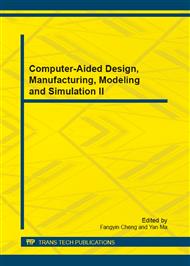p.989
p.994
p.999
p.1003
p.1007
p.1012
p.1017
p.1022
p.1026
Experimental Evaluation of the Response Time of Magnetorheological Dampers Subjected to Impact Loading
Abstract:
In recoil mechanisms applications the response time is an important characteristic for Magnetorheological (MR) fluid dampers, since the recoil cycle is very fast. Method for experimental testing the response time of MR dampers subjected to impact loading was promoted and impact tests were done. Since the viscose damping force of MR dampers is only related to the recoil velocity, which can not be controlled by the operating current, only the controllable damping force response to the input voltage was evaluated, and the viscose damping force were removed by the MR damper’s model. Two factors that may have effect on the response of MR dampers were considered the response of the electromagnetic circuit current of MR damper coils, and the response characteristic of MR fluid material. PI control algorithm was used to shorten the circuit current response. The results indicated that, compared with the much shorter delay of MR fluid, the driving circuit response has more significant effect on the MR dampers’ response time. What’s more, it was also verified that, it is feasible to improve the MR dampers’ response time subjected to impact loading by modifying the electromagnetic circuit through good control algorithms.
Info:
Periodical:
Pages:
1007-1011
Citation:
Online since:
December 2012
Authors:
Keywords:
Price:
Сopyright:
© 2013 Trans Tech Publications Ltd. All Rights Reserved
Share:
Citation:


